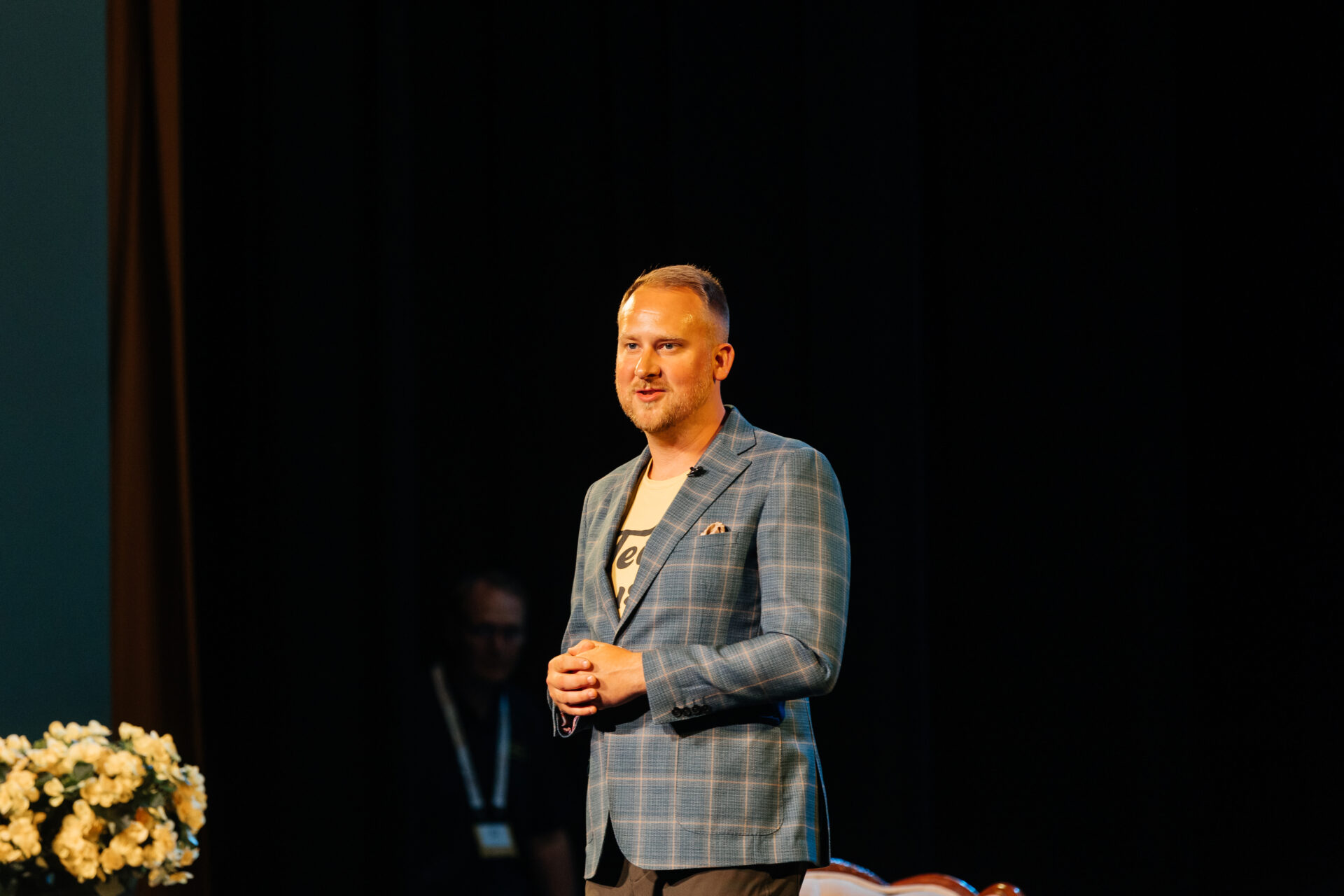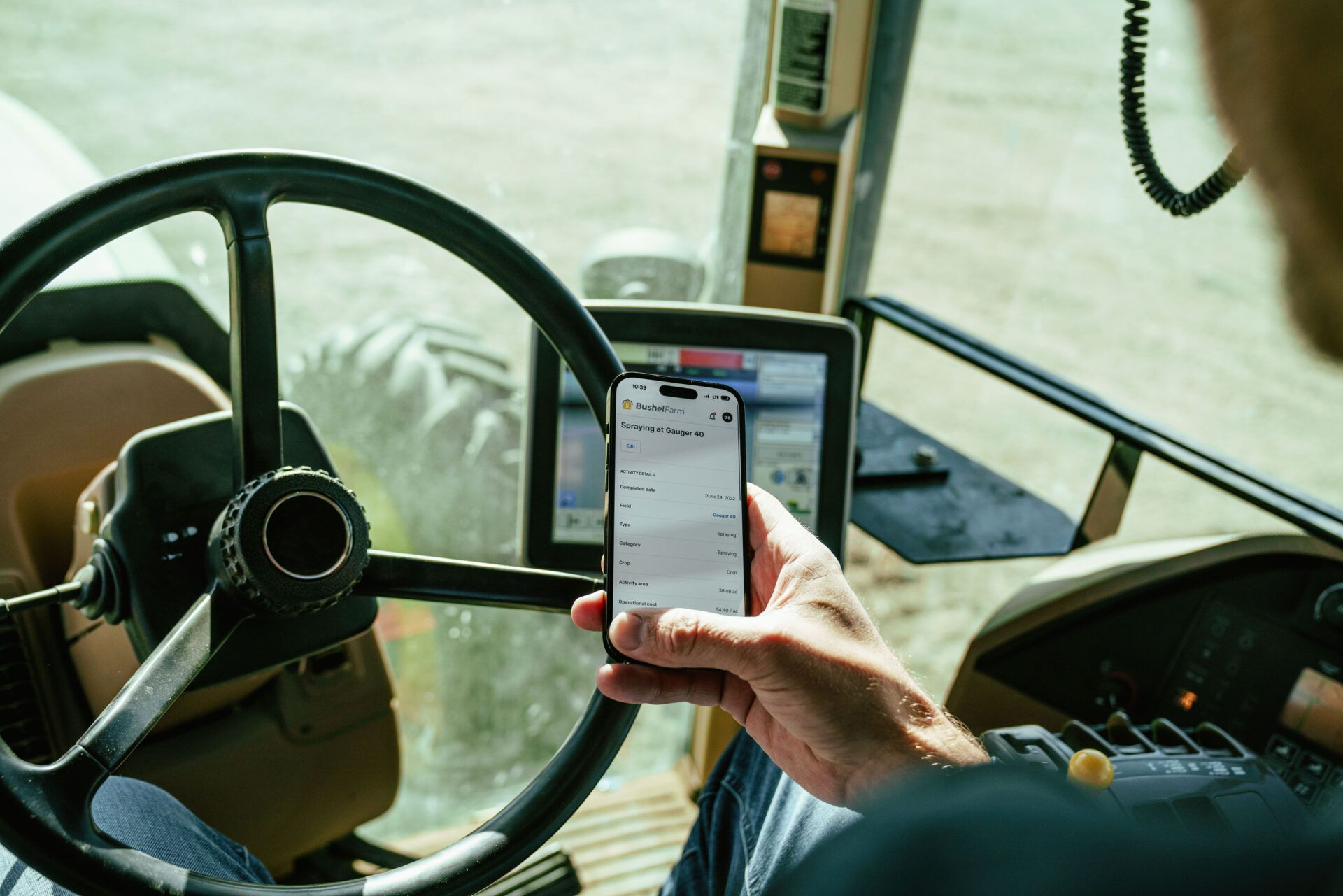“How do we build technology that farmers will use?”
Jake Joraanstad, co-founder and CEO of ag software provider Bushel, started asking that question long before the advent of the crowded farm startup scene we know today.
Back then, “agtech” was largely a bunch of “solutions looking for problems,” he tells AgFunderNews. No one had yet realized that trying to sell agtech directly to farmers was an inefficient way to digitize the industry.
“The middle of the supply chain — the agribusiness, the co-op, the retailer, the big grain company, etc. — is the most underserved, and that’s been our core focus from day one,” he says.
Joraanstad would be the first to point out that Bushel’s product — a software platform that digitizes the supply chain for grain elevators, ag retailers, and others in the “messy middle” — is perhaps less flashy than, say, a harvesting ‘bot or a vertical farm.
“It’s not sexy to jump in and talk about a grain elevator,” he jokes. “We’re doing the plumbing, so to speak, and nobody wants to be the plumber. But it’s required to make things work.”
Joraanstad (JJ) recently caught up with AgFunderNews to discuss how ag and agtech have changed in the last 10 years, what the industry could have done better and what to look forward to in the coming decade. (Spoiler alert: it’ll involve a lot of automation.)

AgFunderNews (AFN): In the last few years, what are the most important developments you’ve seen at Bushel?
JJ: We launched in 2017 into the industry with our toolset. But we had been paying attention to the ag space for some time before that, getting to know people like FarmLogs (which Bushel eventually acquired) at the time and others that we ended up working with in various ways.
We realized that there was nobody really focused on what we call “the messy middle” of the supply chain. There had been 10 years of focus on farmer-facing tools and selling things to the farmer. For us, it was a realization that going direct to the farmer hasn’t worked, and finding a path to go to market as a software company. And we realized that the middle of the supply chain — the agribusiness, the co-op, the retailer, the big grain company, etc. — is the most underserved and that’s been our core focus from day one.
AFN: Why has it been so difficult to sell directly to farmers? Why haven’t other agtechs addressed this “messy middle”?
JJ: For a long time, nobody knew [selling direct to farmers] wasn’t the best route, and it took some time for people to realize.
Part of the challenge is traveling out into these farms, which are generally outside of the city, and going direct one to one to a farmer. The cost of acquisition in a traditional sales model, whether you’re selling anything at all, but certainly in software, it’s maybe too high.
The other part is, it’s not sexy to jump in and talk about a grain elevator, right? You have to be really nuanced and understand the details of how our culture works, at least in the broadacre world of grain and oilseeds.
There’s just so few software investments, for example, in that technology space of the middle part in these last 10 years. It’s been minimal until more recently, and so that’s the opportunity we wanted to uncover. But it was unsexy. We’re doing the plumbing, so to speak, and nobody wants to be the plumber. But it’s required to make things work.
AFN: What’s been ag’s biggest issue over the last 10 years?
JJ: Everybody 10 years ago would have said digital adoption; the farmer was not ready for technology, they didn’t want to use these tools. You probably couldn’t name a popular farm software 10 years ago.
So the core understanding of our challenge was, “How do we build technology that farmers will use?” And how do we build a business out of that?

AFN: Have we adequately addressed the digital adoption issue?
JJ: Ten years ago, McKinsey came out with that first farming report that said agriculture is the least digitized industry of all the major industries in the world.
I’m pretty certain that it’s still true today, but there are bright spots that show we’re going in the right direction. For example, today, if you don’t have a tool that the farmer is using on their phone, you’re probably not reaching the farmer. They’ve got smartphones and iPads, and the tractors are really well connected.
Even 10 years ago, the conversation was, “Do we have the connectivity needed for the farmer to be able to operate on these tools?” A lot of conversation back then was about what can be done offline. I would argue that’s largely no longer an issue. We have built out rural fiber networks around the country. Most farmers have good wifi if not great cell coverage in their areas. And only once in a while — like at a dip in a field — they may lose service.
And so we’ve changed that landscape significantly in the last 10 years, which has led to a friendlier perspective on technology.
The other thing we had to get through were the growing pains of building software that was a solution looking for a problem. There was a lot of that in the first 10 years. A lot of Silicon Valley money was coming in to invest in companies that are supposed to know agriculture in the Midwest. That cultural gap was a challenge. There wasn’t a lot of receptiveness to Silicon Valley Tech coming in. I think we’ve made progress there since.
Also, 10 years ago, there was not really any “plumbing” put in. All the tools we wanted to build are so manual and so intensive in terms of input of information, that there wasn’t good adoption at all. A spreadsheet could do the same thing.
When we started in 2017, none of the Ag ERPs that are a big part of this space had an API. Today most of them are developing or have built APIs, but that was how behind we were with the connectivity and working with other companies building software.
AFN: What of these developments have been the most pivotal changes?
JJ: There are three. One is that rural connectivity is largely solved .
The next major change was the machinery. Companies like John Deere are leading the way, building real tools and tech software that works with their machines. Farmers got used to something like John Deere Ops Center, or got used to having a dashboard in the tractor that was tracking their information.
The third one, and hopefully Bushel had a hand in helping drive some of this, was the user experience. The bar for a former user experience in 2014 was really, really, really low. If we wonder why nobody used tools back then well, go look at them. Today, there’s the expectation to make [these tools] almost consumer-like in terms of ease of use.

AFN: What’s one problem that hasn’t gone away?
JJ: The labor problem. We’re only going to have fewer people in agriculture. In the 1800s, we had a 90% of the population in ag. Today, it’s 1.3%. That’s only going to continue to go down.
Technology, and particularly software that helps create efficiencies for businesses, is one of the only ways you can replace that back office person who no longer lives in town, or a retiree, and we don’t have a replacement.
We have a lot of jobs that are not being filled, and we need to automate.
And automation is coming faster than we know. If you want to combine corn today, you have something called the grain cart which has to meet the combine on the field to dump the corn out of it. Then that grain cart is pulled by a tractor. Another person has to drive it over to the semi, which has another person in it, and unload into the semi. Then the semi has to drive into town, wait in line potentially at the elevator, and then dump the grain and come back in time for that grain cart to load the next batch.
If any of those things are out of sync, then you’re waiting and you can’t do anything. If the combine breaks, you’re not harvesting. And if you can’t get three people to show up, that operation can’t continue or it’s a bit slower because you now have people moving around.
I think within the next three years, it will become common that this is a one person job. Probably you’ll be either in the combine or in the truck. Maybe the truck will even go to town if it’s something like a Tesla semi. Now a small family farm that has a couple thousand acres is sustainable in that with less people you can still do the job.
AFN: What’s one thing ag should have done differently in the last 10 years?
JJ: Investing in solutions looking for problems. We’re seeing the outcome of that now: very few companies have returned capital. And although we’ve turned the corner in that there’s a new cycle of investments happening in ag tech, that first cycle didn’t build any confidence in the industry. As an investor if you’re coming into the space, your assumption is your batting average is going to be really low.
We want that to change. And companies like Bushel and others who take in more recent rounds of capital, our job is to end up in a place where you can build businesses that are meaningful and have a global impact in this industry and return capital. We have the next 10 years to figure that out.
AFN: What do the next 10 years look like?
JJ: In the near term, there’s going to be significant consolidation.
For the first time ever, the farmer doesn’t have to go and type in a paper contract into software. That’s a big deal. And there’s a lot more things like that happening, not just at companies like Bushel, but also in automation.
Although those automation points may look little, when put in aggregate over time, they create an ecosystem that is going to be really powerful. What we describe as that digital infrastructure that we’re all dreaming to help build will look a lot more like your Apple devices today where you go home and throw a movie on the screen and check a message and play music in the other room.
That experience is coming in agriculture. We’re not there yet. But a lot of us have a vision of how that digital infrastructure could be built. And it should be great for a farmer or for an agribusiness to operate in this space in the future if we can just do a good job on the software.
Want more highlights from the last decade? Download the AgFunder 10-year e-zine here.



